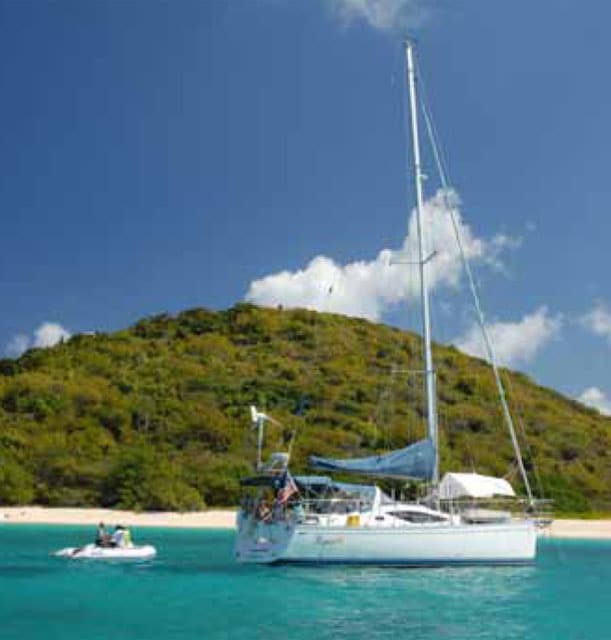Whether you’re heading out aboard your own boat or chartering from the U.S. or British Virgin Islands, don’t head east, which will force you to spend most of your time beating into the wind. Head west! In that direction, not only will you find glorious downwind sailing, but also beautiful secluded anchorages that nobody thinks exist anymore in the Virgins.
Even if you’re on charter, and have only a week, sailing to the Spanish Virgin Islands of Culebra and Vieques from St. Thomas (U.S. Virgins) or Tortola (British Virgins), then possibly making a dash for the U.S. Virgin Islands’ St. Croix, promises the bonus of a glorious sleigh ride back. On this trip, the majority of your time is spent sailing downwind, or reaching. What could be better?
If you have more than a week, or if you’re on your own boat, the opportunities to spend more of your time downwind than to windward expand even more. Even better, this opens up plenty of time for exploring many gems ashore.
Through the years, I did this run more times than I can count aboard Iolaire, my 46-foot engineless yawl. Go the nearly 40 miles to St. Croix. The sail back to St. Thomas or Tortola is without a doubt one of the best in the entire Caribbean. Want to make it happen? Here’s how.
Street’s Directions
Keep Culebra, Culebrita and Vieques, the islands smack between Puerto Rico and St. Thomas, high on your must-do destinations.
En route, plan on a stop at Saba Island, an ideal jumping-off spot when heading west. There you’ll find a wonderful, secluded anchorage in all normal conditions. Anchor between Saba and Turtledove Cay. The sandbar provides a perfect breakwater, and the wind will guarantee you a bug-free night.
In the morning, embark on the 15-mile downwind ride to Culebra. Eyeball your way into Ensenada Honda. Anchor in the western end of the harbor near Cayo Pirata. Ashore, stroll through the capital town of Dewey, a place that time has left behind but which has kept up enough with an array of gift shops, grocery stores and restaurants.
Once refreshed, consider the options for your next anchorage. On the southeast coast of Culebra is one called Bahía de Almodovar, which can’t be beat. Here you’ll find crystal-clear water, a white-sand bottom and a reef to windward that breaks all the swell. There’s plenty of good snorkeling and diving on the reef. Avoid this anchorage from Friday afternoon to Monday morning, as the crowds from Puerto Rico arrive to party all night.
Culebrita, the largest cay just east of Culebra, is worth a visit and a walk some 300 feet up to the lighthouse, which gives a spectacular view of the surrounding area. Pick from among two anchorages: a spectacularly beautiful one in the northwest of the island — but which is completely exposed to ground swell in winter — and one on the south coast that is fine in all weather. Here you must anchor carefully as the shelf is narrow and the bottom drops off precipitously.
Now it’s time to enjoy a wonderful 10- to 12-mile screaming reach to the island of Vieques, site of a National Wildlife Refuge protecting fragile habitats and endangered species. At the island’s eastern end, where the U.S. Navy operated a firing range, are the two best anchorages in the entire Eastern Caribbean, Bahía Icacos on the north coast and Bahía Salina del Sur on the south coast.
If you’ve reached day six of your charter, it’s time to think about beating back to the base. But if you’ve got more time, keep reading.
10 Days of Directions
If you have 10 days, keep poking around among several anchorages on the south coast of Vieques.
On nights when there’s no moon, enjoy excellent bioluminescence at Puerto Mosquito and Puerto Ferro. In both cases if you plunk down via a Bahamian moor, or bow and stern, you’ll find good anchorages in the harbor entrances. Then you can explore the harbors in the dinghy and enjoy the bioluminescence but still be secure for the night in a relatively bug-free spot.
If you want a little civilization, drop the hook at Puerto Real; pay attention to harbor depth, which is less than recorded in the charts. Go ashore at Esperanza. It’s a nice little village with small stores to top up any deficiencies in the galley, and a couple of small friendly bars and restaurants.
14 Days — or More
For those of you who are free-spirited liveaboards or who’ve dropped out from the corporate grind, having a couple of weeks to really get a taste of the diversity of the Virgins is ideal.
It’s off to St. Croix, the largest of the U.S. Virgins, with all of you. Many people cruising the region skip this 23-mile-long island, but the 19th-century capital of the territory once famed for its vast sugar plantations is not to be missed.
Allow one day to sail to St. Croix from Vieques, four days in St. Croix to explore anchorages and sightsee on land, and one day for that wonderful sleigh ride back north.
From the eastern end of Vieques to Christiansted, St. Croix, there are two options: Sail 34 miles to Frederiksted on the west side of the island, or 40 miles to Christiansted, on the north side.
Most sailboats prefer Christiansted, as Frederiksted is open to ground swell. However, if you do stop there, the sail to Christian-sted is an easy 3-mile smooth-water reach to Hams Bluff, then a 15-mile dead beat up the north coast to Christiansted Harbor.
Make sure you leave Vieques early; don’t enter Christiansted Harbor at night, as it’s protected by aptly named Long Reef and you must pay careful attention while in the busy channel.
Once safely anchored, rest up, and in the morning go ashore and explore the historic town, which boasts stunning examples of Danish architecture; it’s by far the most beautiful municipality in all of the Eastern Caribbean. And it’s the only major town throughout the Eastern Caribbean that’s not visited by cruise ships! If you’re in the mood, rent a car and drive around the island. Stop at Frederiksted and take in the sights. Make room for a trip to Estate Whim Museum on the grounds of the former sugar plantation, whose buildings have been preserved by the St. Croix Landmarks Society.
After all this activity you’re welcome to sleep in the next morning. Then take a leisurely sail to Buck Island, a short 4½ miles northeast of Christiansted.
If you’re good at reef piloting, now go inside the barrier reef on the north side of St. Croix and work your way east to Teague Bay. Anchor off the St. Croix Yacht Club, or if you’re really good and have someone on the spreaders, work your way east to Cottongarden Bay.
The anchorages inside the reef here are superb, with a white-sand bottom, good holding, crystal-clear water and, of course, a reef to windward that breaks the sea. The wind guarantees a bug-free anchorage, good diving and seclusion. Exhale.
Now, and only now, are you ready for that 40-plus-mile sleigh ride north. What a wonderful way to end a charter or cruise. You won’t regret it.
Don Street has been writing guides to the Eastern Caribbean since 1964, and knows this part of the watery world like no other.
Chartering
If you’re interested in bareboat chartering to the Spanish Virgin Islands and St. Croix, ask the charter company whether it’s allowed. Company policies differ on heading south for a number of reasons, ranging from lack of support staff and chase boats to the skipper’s level of experience. Some companies prohibit it while others allow it through special waivers and agreements that absolve the company of liability. For a list of Caribbean charter companies, consult the CW charter address book in the August 2013 issue or the CW charter directory. – Elaine Lembo
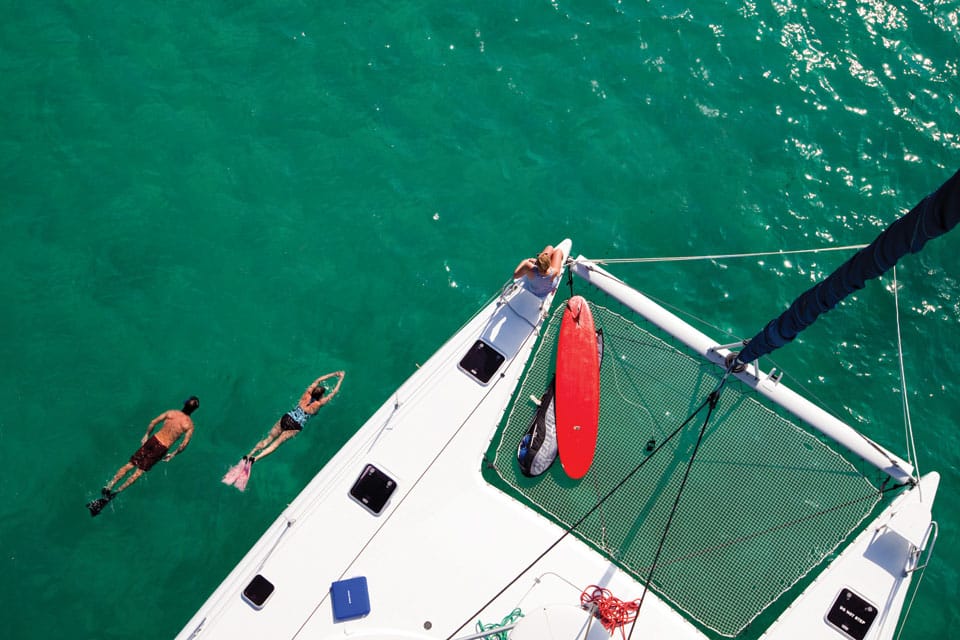
Spanish Virgin Islands
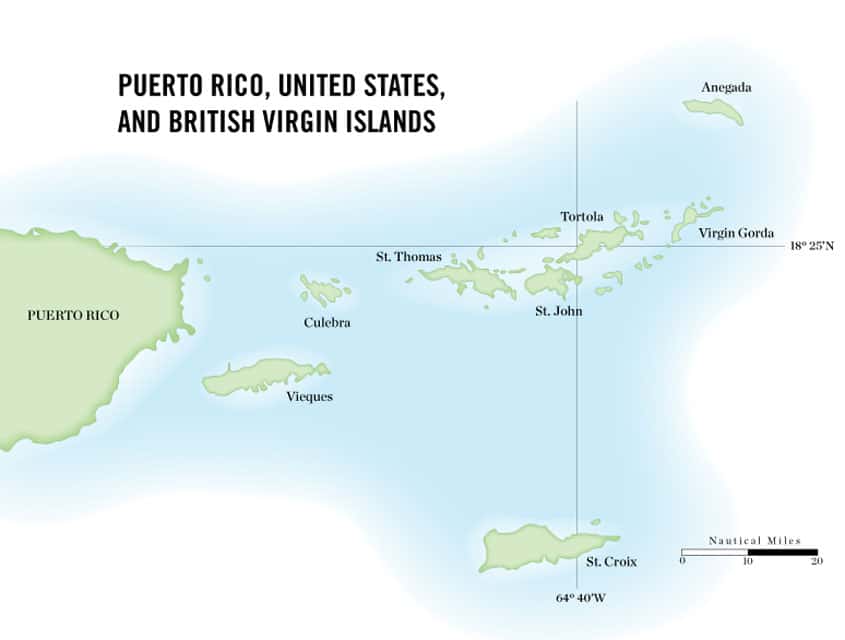
bvi-map.jpg
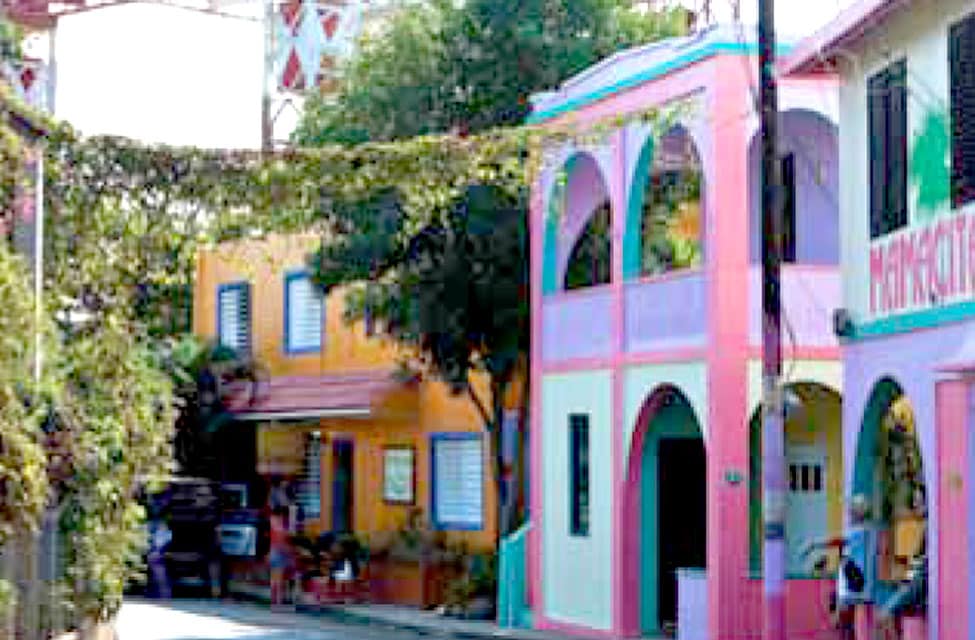
colorful-houses.jpg
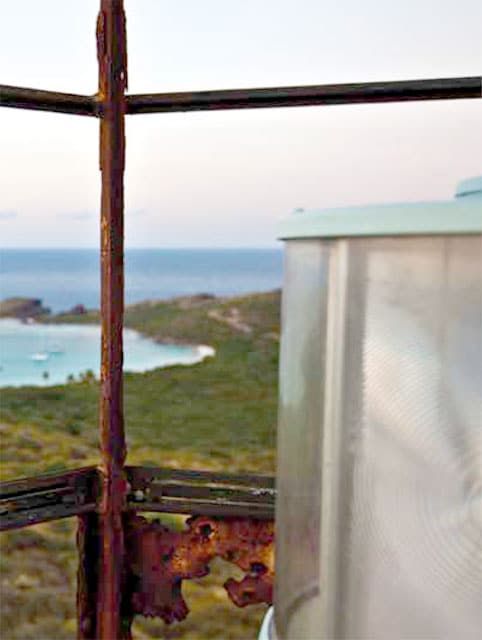
steet-lighthouse.jpg
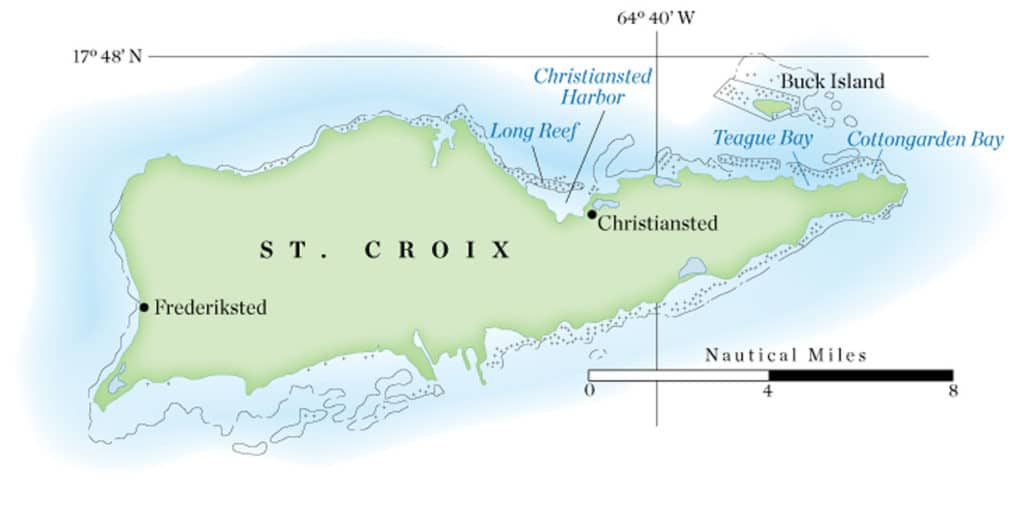
st-croix.jpg
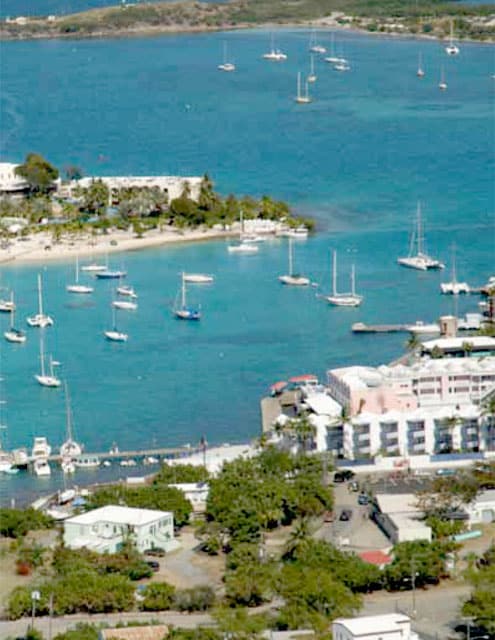
street-hotel.jpg
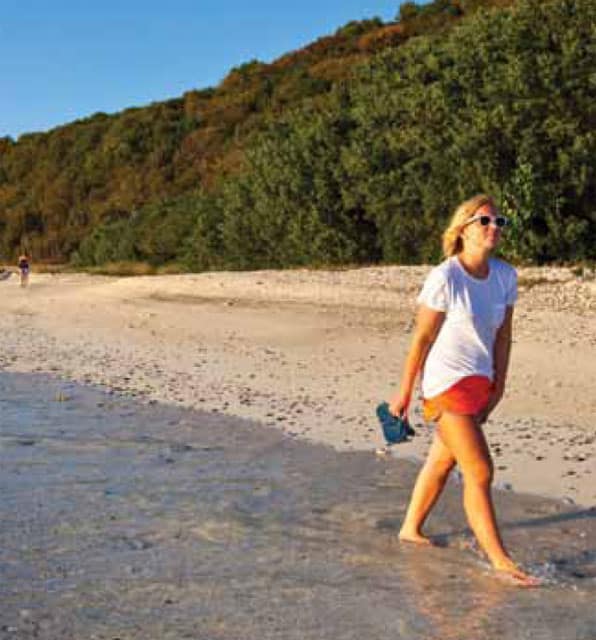
beach-walk.jpg
